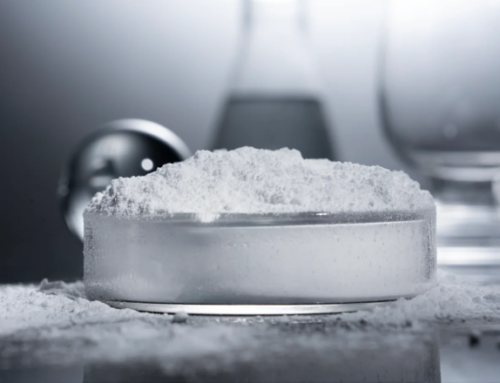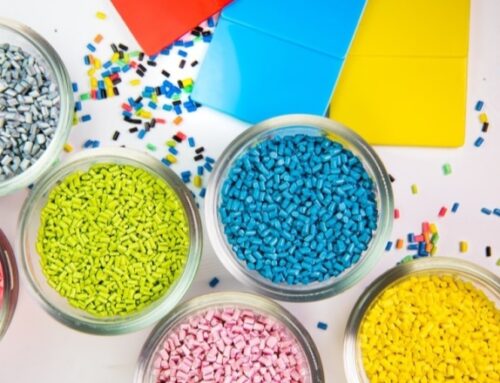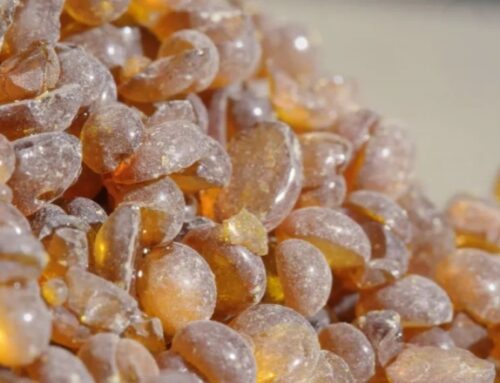Wax substances play an important role in polymer material additives. Many wax additives on the market contain raw materials extracted from crude oil or natural gas. From traditional high-density polyethylene (HDPE) wax used to increase extinction performance or improve scratch resistance, to polypropylene wax or polytetrafluoroethylene (PTFE) wax used to adjust the surface smoothness of coatings, their performance is excellent and they have advantages, which is why they are specified in applications. However, from a sustainable perspective, such as the use of bio based raw materials, all these waxes must undergo strict scrutiny.
1. Several commonly used wax additives
1) Polyethylene wax (PE)
Polyethylene wax, also known as polymer wax, abbreviated as polyethylene wax, has a density of 0.93-0.98, a melting point of 90-120℃(varying with molecular weight), a molecular weight of 1500-5000, a hardness of MAX3-8, and a viscosity (CPS140℃) of 10-500. It is widely used due to its excellent cold resistance, heat resistance, chemical resistance, and wear resistance.
In normal production, this wax can be directly added as an additive to polyolefin processing, which can increase product gloss and processing performance. As a lubricant, it has stable chemical properties and good electrical properties. It has good compatibility with polyethylene, polypropylene, polyvinyl acetate, ethylene propylene rubber, and butyl rubber, and can improve the flowability of polyethylene, polypropylene, and ABS, as well as the demolding properties of polymethyl methacrylate and polycarbonate. Compared with other external lubricants, it has a stronger internal lubrication effect on PVC.
Polyethylene wax is a chemical material with a white small bead/flake color, formed by ethylene polymerization rubber processing agents. It has the characteristics of high melting point, high hardness, high glossiness, and snow-white color. It is a low molecular weight polyethylene homopolymer or copolymer widely used in coatings. In solvent based coatings, it mainly plays a role in extinction, scratch resistance, wear resistance, polishing resistance, engraving resistance, anti adhesion, anti precipitation, thixotropy, as well as good lubrication and processability, and metal pigment positioning.

2) Polypropylene wax (PP)
Polypropylene wax, also known as low molecular weight polypropylene wax. It has many characteristics, such as high melting point, low melting degree, good lubrication and dispersion, and has the advantages of high practicality and wide use.
Adding it during the processing of high viscosity polypropylene fibers can increase MI value, enhance lubrication and flowability, reduce flat wire breakage, and improve smoothness, making it an ideal modifier for polyolefin melt index. It can also serve as a polypropylene resin blend modification release agent, improving the fluidity of the blend after adding a large amount of filler, achieving material solubility and mutual solubility, facilitating product demolding and improving the smoothness of the finished product.
In addition, as a carrier for the manufacturing of electrostatic copier toner, it can play an excellent lubricating role, improve the melting point and durability of toner, and prevent the adhesion of copies. At the same time, it can also serve as an energy-saving agent and process modifier for polyolefin resin processing, accelerating extrusion speed, increasing work efficiency, improving film appearance quality and transparency, and eliminating shark skin phenomenon.
3) Oxidized polyethylene wax (OPE)
The oxidized polyethylene wax in the new polar wax, also known as OPE wax, has the characteristics of low viscosity, high softening point, good hardness, non toxicity, good thermal stability, and low high-temperature volatility. At the same time, it has excellent dispersibility for fillers and pigments, as well as excellent external lubrication and strong internal lubrication, as well as coupling effect.
OPE wax is made from polyethylene wax through a special oxidation process, and its chemical composition is a low molecular weight ethylene vinyl acetate copolymer containing carbonyl groups. It has a wide range of applications and can be used as a dispersant, lubricant, brightener, coupling agent for pigments or fillers such as thick color masterbatch, polypropylene masterbatch, additive masterbatch, and filling masterbatch; In rubber processing, it can be used as a lubricant, release agent, and phase solvent. It has good compatibility with various rubbers, promotes good resin fluidity, reduces power consumption and adhesion between resin and mold, and also has good anti-static properties.

4) Paraffin wax
Paraffin is a non-polar solvent mainly composed of straight chain alkanes, as well as a small amount of alkanes with individual branched chains and monocyclic alkanes with long side chains. Its main performance indicators are melting point, oil content, and stability. The main factors affecting these indicators are the weight and oil content of the selected raw material fractions.
2. The Sustainable Path of Additives
Crude oil is a resource limited raw material, and its reserves will gradually decline in the coming centuries, so there is an urgent need to discover, test, and use new raw materials to replace it.
Climate change is ongoing and largely influenced by our actions. Saving every ton of carbon dioxide will help achieve the goal of the Paris Agreement: limiting global warming to within 1.5 ℃. Governments around the world are aware of this and are taking measures to address climate change, which in turn will affect the use of fossil raw materials. The government’s punitive measures include imposing carbon emission taxes or purchasing licenses, allowing only the purchaser to emit a limited amount of carbon dioxide.

However, the economic impact it brings is only one aspect, and reducing the ecological effects of using crude oil derivatives is more important.
Sustainability also includes the handling of products at the end of their lifecycle. Our daily lives are surrounded by plastic, resulting in a large amount of plastic waste. This type of plastic waste takes a long time to degrade in the environment, taking PE plastic bags as an example, it takes about 500 years. Therefore, the treatment of products at the end of their lifecycle, such as biodegradation, has become increasingly important. Biodegradation refers to the degradation of plastics by microorganisms such as bacteria and fungi in a relatively short period of time. However, plastic is not always as obvious in our lives as plastic bags. Many wax additives are based on synthetic raw materials, so they, like plastics, have biodegradation issues. Therefore, an increasing number of biodegradable materials can help pave the way for a more sustainable future.
Article source: www.xianjichina.com
M&J International Trading Co., Ltd





